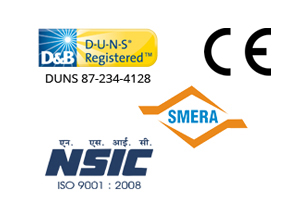Ethylene Oxide (ETO) sterilization stands as a cornerstone of modern healthcare systems, ensuring the safety and efficacy of critical medical equipment and devices. Within the Italian healthcare landscape, ETO sterilization plays a pivotal role in maintaining the highest standards of patient care and safety. This article delves into the applications and significance of ETO sterilization within the Italian healthcare system.
Introduction
Modern healthcare heavily relies on sterile medical equipment and devices to ensure patient safety and effective treatment. Ethylene Oxide (ETO) sterilization, a widely adopted method, plays a critical role in achieving these goals. Within Italy’s healthcare system, the application of ETO sterilization is integral to delivering high-quality care.
The Role of ETO Sterilization in Healthcare
Ethylene Oxide sterilization is a process that eradicates microorganisms from medical devices and equipment while preserving their functionality. It addresses the need for sterile products in various healthcare applications, safeguarding patients and healthcare professionals from potential infections and complications.

Applications of ETO Sterilization in Italy
Surgical Instruments and Implants
In surgical settings, sterile instruments are paramount. ETO sterilization ensures that surgical instruments, implants, and other critical items remain free of harmful microorganisms, reducing the risk of post-operative infections.
Medical Devices and Equipment
ETO sterilization extends to medical devices used for diagnostic, treatment, and monitoring purposes. Devices such as catheters, endoscopes, and anesthesia equipment require thorough sterilization to prevent cross-contamination and infection transmission.
Pharmaceuticals and Biomedical Materials
ETO sterilization is vital for ensuring the sterility of pharmaceutical products, including medications and biological materials. It plays a crucial role in maintaining the efficacy and safety of pharmaceuticals and biomedical materials.

Ensuring Patient Safety and Infection Control
Preventing Healthcare-Associated Infections
Healthcare-associated infections (HAIs) are a significant concern in healthcare settings. ETO sterilization serves as a powerful tool to mitigate HAIs by ensuring that medical equipment and devices are free from infectious agents.
Protecting Vulnerable Patient Populations
Certain patient populations, such as those undergoing surgeries, immunocompromised individuals, and newborns, are particularly vulnerable to infections. ETO sterilization helps protect these populations by providing sterile environments and equipment.
Regulatory Compliance and Standards
Italian Ministry of Health
The Italian Ministry of Health oversees the regulatory framework for ETO sterilization within the country’s healthcare system. Regulations are designed to ensure that sterilization processes meet strict standards, minimizing the risk of infections and complications.
European Medical Device Regulations
In alignment with European regulations, Italy adheres to the Medical Device Regulation (MDR) and In Vitro Diagnostic Medical Devices Regulation (IVDR). These regulations establish requirements for the safety and efficacy of medical devices, including sterilization processes.
The Continuous Advancement of ETO Sterilization
Advancements in technology and best practices continue to shape the field of ETO sterilization. Ongoing research, innovation in sterilization equipment, and refinement of sterilization processes contribute to enhancing patient safety and care outcomes.
Conclusion
Ethylene Oxide sterilization is a vital component of the Italian healthcare system, contributing to patient safety, infection control, and the overall delivery of high-quality healthcare services. By ensuring the sterility of medical equipment, devices, and pharmaceuticals, ETO sterilization plays a pivotal role in preventing infections and promoting positive patient outcomes. As healthcare standards evolve, ETO sterilization will remain an essential practice in upholding the integrity and safety of Italy’s healthcare system.





